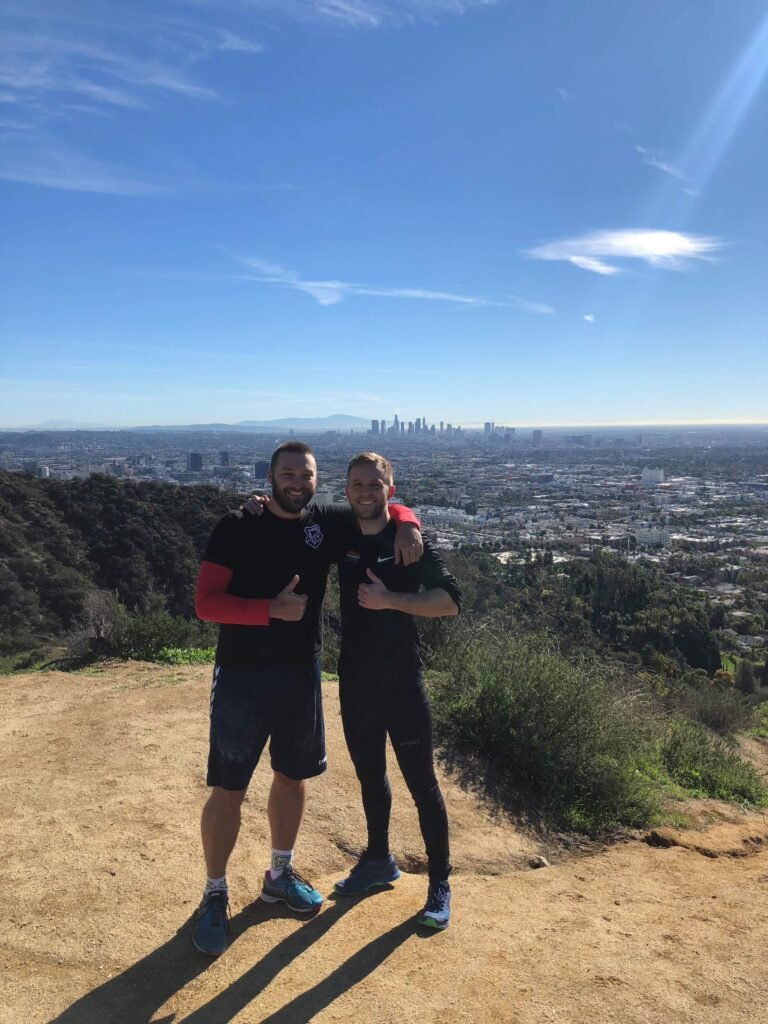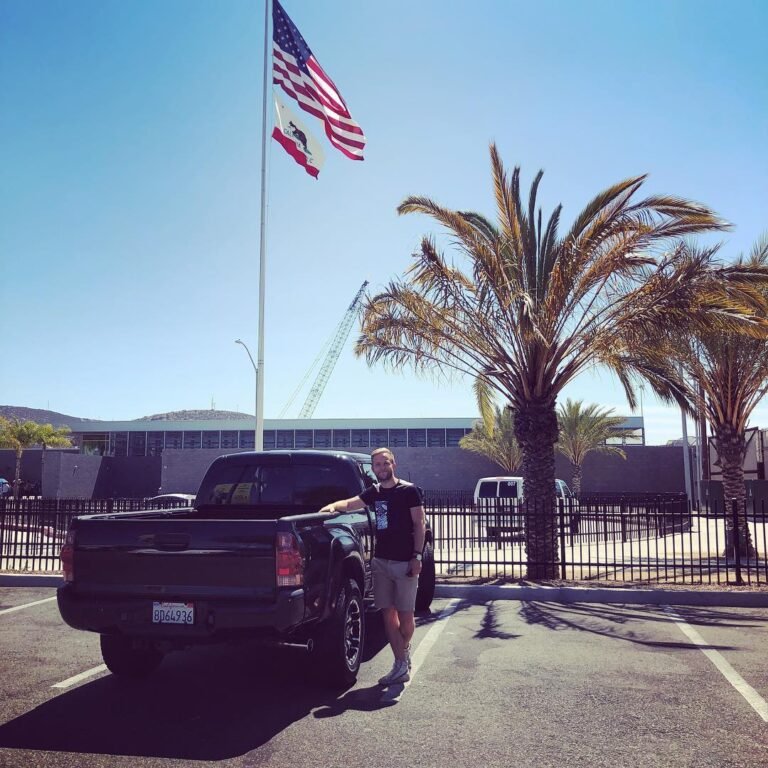Step-by-Step Guide to Transitioning From an O-1 to an EB-1 Visa
Switching from an O-1 to an EB-1 visa can feel like moving from a narrow, winding path to a bustling highway—filled with opportunities but also new challenges to navigate. For many, this step represents more than just a visa change; it’s a leap towards a dream of permanent residency and a future built on the foundation of professional accomplishments. It’s a big transition, but with clear steps and proper planning, it doesn’t have to be overwhelming.
When I first approached this process, I remember feeling both excited and intimidated. The thought of upgrading to an EB-1 visa was thrilling, but the maze of requirements, paperwork, and criteria seemed daunting. There were moments when I doubted whether I could pull it off. However, I quickly learned that with the right mindset and a well-thought-out strategy, the process could not only be manageable but also rewarding. It became a chance to reflect on my achievements and set even higher goals for the future.
If you’re considering making this jump, it’s important to arm yourself with knowledge and a game plan that keeps you focused. Understanding the nuances of the EB-1 upgrade and preparing accordingly can help you approach this journey with confidence and clarity. In this guide, I’ll share everything I’ve learned—from the key requirements to practical tips—so you can avoid common pitfalls and feel empowered every step of the way. Whether you’re just beginning to explore this path or you’re ready to dive in, I’ll be here to guide you through what comes next!
What is the EB-1 Visa and How Does it Differ from the O-1?
Navigating the U.S. immigration system can often feel overwhelming, especially when deciding which visa category aligns best with your long-term goals. Two popular visa options for individuals with significant accomplishments are the O-1 and the EB-1. While they both cater to highly skilled individuals, they serve distinct purposes and have key differences that can impact your career and residency goals. Let’s break it down.
Understanding the EB-1 Visa Categories
The EB-1 visa falls under the employment-based immigrant visa category and is reserved for individuals who can demonstrate extraordinary ability, exceptional academic or professional achievements, or leadership within multinational organizations. It is divided into three main subcategories:
- EB-1A: Extraordinary Ability
This category is designed for individuals with exceptional talent in fields like arts, sciences, education, business, or athletics. Applicants must provide substantial evidence of their expertise and international acclaim, such as major awards or significant contributions to their field. - EB-1B: Outstanding Professors or Researchers
Reserved for academics or researchers with a distinguished reputation in their field, this category often requires a permanent job offer from a U.S. employer, along with proof of notable achievements in academic research or teaching. - EB-1C: Multinational Executives or Managers
This option is tailored for individuals who have worked in a managerial or executive role for an international company and are transitioning to a similar position in a U.S. branch of that company.
Each subcategory has its own unique criteria, but all lead to the same goal—a U.S. green card.
Key Differences Between the EB-1 and O-1 Visas
While the EB-1 and O-1 visas are both geared towards high-achieving individuals, the primary distinction lies in their purpose and benefits.
- Pathway to Permanent Residency
The EB-1 visa is a direct route to obtaining a green card, which grants permanent residency in the United States. This means EB-1 holders have the ability to live and work in the U.S. indefinitely, with the potential to apply for U.S. citizenship after meeting residency requirements.On the other hand, the O-1 visa is nonimmigrant, meaning it is temporary and does not provide a direct path to permanent residency. While it allows individuals to work in the U.S., it requires renewal and depends on ongoing employment in the field of extraordinary ability. - Flexibility and Long-Term Benefits
EB-1 holders enjoy more freedom in their employment and residency options since the green card is not tied to a specific employer. By contrast, the O-1 visa is often tied to an employer or sponsor, limiting options for self-employment or job changes without additional applications. - Process and Standards
Both visas demand evidence of extraordinary ability, but the EB-1 generally requires a higher standard of proof due to its permanent residency benefits. Demonstrating sustained national or international acclaim and proving intent to contribute significantly to the U.S. are critical components of the EB-1 application.
Why the O-1 Visa is Often a Stepping Stone to the EB-1
The O-1 visa serves as a valuable starting point for many high-achieving professionals and artists looking to build their careers in the U.S. For those aspiring to eventually transition to permanent residency, the O-1 can provide the foundation needed to strengthen an EB-1 application.
During their time on an O-1 visa, individuals have the opportunity to:
- Build a stronger portfolio of accomplishments.
- Establish a professional network and gain U.S.-based recognition.
- Prepare supporting evidence, such as letters of recommendation, awards, and publications, to meet EB-1 criteria.
Think of the O-1 visa as an entryway and the EB-1 as the ultimate destination. With careful planning and continuous achievements, many professionals successfully make the leap, moving closer to their long-term goals of permanent residency and career growth in the U.S.
By understanding the relationship between these two visas, you can make informed decisions about how to structure your path and maximize your opportunities along the way.

Am I Eligible to Transition from an O-1 to an EB-1 Visa?
For those currently holding an O-1 visa and aiming to transition to the prestigious EB-1 visa, understanding the eligibility requirements and differences between the two is a crucial first step. While both visas cater to individuals of extraordinary talent, the EB-1 has stricter standards, as it offers a direct pathway to U.S. permanent residency. Transitioning is possible with the right preparation and documentation, but it requires a strategic approach.
Checklist of EB-1 Requirements
To qualify for the EB-1 visa, you’ll need to demonstrate sustained national or international acclaim in your field and prove that your contributions have been widely recognized. Below is a checklist of key requirements that can indicate EB-1 eligibility:
- Major Awards or Prizes
Evidence of winning nationally or internationally recognized awards or accolades that signify excellence in your field. Examples include prestigious prizes in arts, sciences, or athletics, such as an Academy Award or an Olympic Medal. - Publications
Authorship of scholarly articles, books, or papers published in notable journals, magazines, or reputable media outlets in your field. - Original Contributions
Demonstration of significant original contributions that have impacted your industry or discipline in a meaningful way. - Leadership Roles
Holding prominent positions, such as executive roles in organizations, committees, or professional groups where your influence has been crucial. - Media Coverage
Documentation of your work or achievements being featured in prominent media outlets, such as interviews, profiles, or reports in nationally or internationally respected publications. - Membership in Elite Organizations
Being a member of associations or groups that require outstanding achievement as a condition of membership. - Judging Work of Others
Invitations to serve as a judge or panelist to evaluate the work of peers or professionals in your area of expertise.
Applicants need to meet at least three of these criteria to qualify under the EB-1A category for extraordinary ability. For other categories, such as Outstanding Professors or Researchers (EB-1B) or Multinational Executives/Managers (EB-1C), specific requirements apply, often tied to employment in an academic or corporate context.
Comparing O-1 Achievements with EB-1 Qualifications
Although the O-1 and EB-1 share similarities, there are important distinctions in their qualifications:
- Focus on Sustainability
The EB-1 demands evidence of sustained acclaim over time, whereas the O-1 focuses more on demonstrating exceptional ability at the time of the application. - Scope of Achievements
The O-1 visa allows recognition for regional or national achievements, while the EB-1 typically requires national and international acclaim. For example, an O-1 visa holder recognized as an emerging talent might not yet qualify for an EB-1 unless they can demonstrate additional accomplishments that meet the higher standard. - Field Impact
EB-1 applicants need to prove that their work has had a lasting impact on their field, beyond personal recognition or individual success. - Permanent Residency Focus
Unlike the O-1 visa, which is temporary, the EB-1 application process evaluates the applicant’s potential to contribute to the U.S. permanently.
Strategies to Strengthen Your EB-1 Application
If your current O-1 achievements fall short of EB-1 requirements, consider adopting these strategies to bolster your application:
- Expand Your Portfolio
Continue building on your body of work by pursuing larger or more significant projects. Aim for achievements that garner broader recognition, such as publishing in reputable outlets or obtaining high-profile awards. - Secure Strong Letters of Recommendation
Collect detailed and compelling letters of recommendation from respected professionals in your field. These letters should highlight your accomplishments, contributions, and their impact on your industry. - Increase Media Exposure
Work to gain coverage in prominent media outlets by collaborating with publicists, participating in high-profile events, or seeking speaking opportunities. - Serve in Leadership Roles
Volunteer or secure leadership positions in professional organizations, academic committees, or public panels to showcase your influence and responsibility in shaping your field. - Document Your Contributions
Keep a detailed record of all your accomplishments, from awards and publications to memberships and appearances. Well-documented evidence strengthens your case and makes the application process smoother. - Strengthen the Narrative
Craft a clear and compelling narrative that connects your achievements to their broader impact on your industry and underscores your commitment to continuing your work in the U.S. - Seek Legal Expertise
Consult with immigration attorneys who specialize in EB-1 applications. They can help evaluate your eligibility, recommend steps to address gaps, and prepare a strong application package.
By strategically enhancing your professional profile and assembling a comprehensive application, you can increase your chances of successfully transitioning from an O-1 visa to the highly coveted EB-1 green card. With preparation, persistence, and the right support, achieving your goal is well within reach.
Step-by-Step Guide to Transitioning
Transitioning from an O-1 visa to an EB-1 visa is an important step toward achieving permanent residency in the United States. Although the process may seem daunting, breaking it down into clear steps can make it manageable. In this guide, we’ll outline each phase of the process, including practical tips and insights to help you navigate the journey with confidence.
Step 1: Assess Your Qualifications and Identify Your EB-1 Category
Before beginning your transition, it’s essential to evaluate whether you meet the rigorous standards of the EB-1 visa and determine which category is most appropriate for you.
- EB-1A (Extraordinary Ability): Ideal for individuals who can demonstrate sustained national or international acclaim in fields such as arts, sciences, business, or athletics. You’ll need to satisfy at least three of the ten criteria, such as receiving major awards, publishing articles, or serving as a judge of others’ work.
- EB-1B (Outstanding Professors and Researchers): Suited for those with international recognition in academia or research and who have a permanent offer from a U.S. employer in a qualifying field.
- EB-1C (Multinational Executives and Managers): Designed for executives or managers working for multinational companies. You’ll need proof of working for a qualifying employer overseas and continuing a similar role in the U.S.
Start by reviewing your professional accomplishments to identify areas that meet the EB-1 requirements. If there are gaps, create a plan to address them before moving forward.
Step 2: Prepare the Necessary Evidence
Once you’ve identified your category, gathering the required documentation is critical to a strong EB-1 application. The burden of proof is high, so ensure your materials clearly highlight your qualifications.
- Evidence Examples:
- Media coverage of your achievements.
- Documentation of prestigious awards or accolades.
- Contracts or letters verifying employment or leadership roles.
- A portfolio of published works or original contributions in your field.
- Membership certificates for exclusive organizations.
Tip: Take the time to organize this evidence cohesively. Each piece should connect to your narrative of extraordinary ability or recognition in your field. Use professional translators if any documents are not in English.
Step 3: Consult an Immigration Attorney
The EB-1 visa application process is complex, and consulting a qualified immigration attorney can significantly improve your chances of success. Attorneys can:
- Help identify weak points in your application and suggest ways to strengthen them.
- Provide guidance on writing a strong personal statement that ties your achievements to your EB-1 eligibility.
- Review letters of recommendation for content and clarity to ensure they highlight your exceptional qualifications.
- Assist with form preparation and submission to avoid errors or omissions that could delay your application.
An experienced immigration attorney will also help you navigate any challenges specific to transitioning from an O-1 to an EB-1, including timing considerations and potential pitfalls.
Step 4: File Form I-140 and Explore Premium Processing
The next step is to file Form I-140, the “Immigrant Petition for Alien Worker,” which serves as your official EB-1 visa application. This petition must include:
- Your personal information and qualifications.
- A description of how you meet EB-1 criteria.
- Supporting evidence, including all documentation from Step 2.
Premium Processing Option
If time is a concern, you can opt for premium processing, which expedites the review of your I-140 petition. For an additional fee, the United States Citizenship and Immigration Services (USCIS) guarantees processing within 15 calendar days. This option is particularly useful if you are on a strict timeline or need an outcome quickly for other immigration purposes.
Pro Tip: Double-check your application and supporting documents for consistency and completeness before filing. Errors or missing information can lead to delays or denials.
Step 5: Await Approval, Then Adjust Status or Consular Process
After filing Form I-140, USCIS will review your case. If your petition is approved, you’ll move to the next stage of the process, which differs depending on your location and current visa status:
- Adjusting Status (If in the U.S.)
File Form I-485, the “Application to Register Permanent Residence or Adjust Status.” This allows you to transition to a green card without leaving the U.S. While your I-485 is pending, you may also apply for a work permit (Form I-765) and travel permit (Form I-131). - Consular Processing (If Outside the U.S.)
Attend an interview at a U.S. consulate or embassy in your home country. Be prepared to present additional documentation, such as medical exams and police clearance certificates.
The timeline for these steps varies based on your location, USCIS processing times, and the availability of visa numbers for your category.
Timeline Breakdown: From Filing to Green Card Approval
While individual cases vary, understanding the general timeline can help set realistic expectations:
- Form I-140 Filing and Processing
- Regular Processing: 6-10 months.
- Premium Processing: 15 calendar days.
- Adjustment of Status or Consular Processing
- Adjustment of Status: Typically 8-14 months, depending on the caseload at your local USCIS office.
- Consular Processing: 6-12 months from the approval of Form I-140 to the issuance of an immigrant visa.
- Green Card Issuance
Once your application is approved, you will receive your green card, granting permanent residency status in the U.S.
Factors Influencing Timelines:
- Backlogs or delays at USCIS or consulates.
- RFEs (Requests for Evidence), which add processing time if additional documentation is required.
- Personal factors, such as timing adjustments for international travel.
Tips for a Smooth Transition
- Start Early
Preparing your application and gathering evidence can take several months. Begin as soon as you’ve identified your eligibility. - Maintain O-1 Compliance
Until your EB-1 is approved, you must remain in full compliance with your current O-1 visa requirements. - Stay Informed
Regularly check USCIS updates and processing times to stay on top of potential changes or delays. - Plan Finances
Transitioning to an EB-1 involves filing fees and potentially additional costs for premium processing, legal assistance, and translations. - Communicate with Employers
If you’re transitioning as part of a job offer, keep your employer updated on your progress and any action required on their end.
The Big Picture: From Temporary to Permanent Residency
Transitioning from an O-1 visa to an EB-1 visa is not just a procedural upgrade—it’s a monumental step toward achieving long-term stability in the United States. While the process demands preparation, organization, and patience, the outcome is well worth the effort.
By following this step-by-step guide and seeking professional support where necessary, you can turn your temporary visa status into a permanent residency, paving the way for personal and professional growth in the U.S. Embrace the journey with confidence—it’s a testament to your extraordinary achievements and aspirations.

Challenges You Might Face—and How to Overcome Them
Transitioning from an O-1 to an EB-1 visa, while exciting, isn’t always smooth sailing. The process involves rigorous evaluation, extensive documentation, and, in some cases, frustrating delays. However, understanding these challenges ahead of time and learning how to address them effectively can make a significant difference. Below, we outline common obstacles applicants face during this transition, actionable strategies to overcome them, and inspiring examples of success stories.
Common Challenges in the O-1 to EB-1 Transition
- Insufficient Evidence to Prove Extraordinary Ability or Acclaim
One of the most daunting hurdles is meeting the EB-1 criteria, which are often stricter than those of the O-1. While O-1 approval requires evidence of recognition in your field, EB-1 demands proof of sustained national or international acclaim. This higher standard can leave applicants feeling unsure whether their accomplishments are sufficient. - Unclear or Incomplete Qualifications
You may have achieved remarkable feats, but translating them into terms that align with USCIS criteria can be challenging. For instance, awards may lack global recognition, or published work might not clearly demonstrate its impact. - Requests for Evidence (RFEs)
USCIS may issue an RFE if they find your initial application incomplete or if they require additional proof of eligibility. RFEs can lead to delays, increase stress, and, in some cases, jeopardize the success of your application. - Time-Sensitive Issues
The transition process can be lengthy, and managing the deadlines of both your O-1 visa and EB-1 application can create logistical complications, especially if your current visa is close to expiration. - Financial Strain
The cost of filing forms, preparing evidence, and hiring legal counsel can add up, particularly if you encounter additional expenses like translations or expedited processing fees.
Strategies to Overcome These Challenges
- Strengthen Your Evidence Portfolio
If your achievements seem insufficient, take the time to build a robust evidence portfolio:- Update Your Profile: Pursue additional recognitions, such as industry awards, leadership roles, or memberships in professional organizations.
- Document Contributions: Keep detailed records of any significant impact you’ve had on your field, including testimonials, media coverage, or letters from experts.
- Highlight Longevity: For the EB-1, emphasize the consistent nature of your accomplishments over time to demonstrate sustained acclaim.
- Consult Experts for Application Clarity
Collaborating with an experienced immigration attorney can help frame your achievements in a way that aligns with USCIS criteria. For example, an attorney can:- Draft or edit letters of recommendation to highlight your extraordinary ability effectively.
- Guide you on which achievements to prioritize in your application.
- Ensure your documentation clearly communicates its relevance to the EB-1 requirements.
- Prepare Thoroughly for RFEs
RFEs are not uncommon but can be handled efficiently with a proactive approach:- Understand the Issue: Carefully review USCIS’s request to identify what’s missing or unclear.
- Respond Promptly: Submit your response well before the deadline to avoid further delays.
- Provide Comprehensive Answers: Address each point raised in the RFE thoroughly, attaching all requested evidence and an organized index for clarity.
- Seek Assistance: Work with your attorney to draft a compelling response, as they can identify gaps you might miss.
- Manage Time Wisely
Balancing the timelines of your O-1 visa and EB-1 process is crucial:- Start Early: Begin gathering evidence and preparing your application long before your O-1 visa expires.
- Use Premium Processing: If timelines are tight, opt for premium processing of Form I-140 for a faster decision.
- Monitor Visa Status: Keep track of your visa expiration dates and explore options like extensions or travel plans to avoid overstaying.
- Create a Budget Plan
The financial burden of an EB-1 application can be reduced with strategic planning:- List Costs: Outline expenses, including filing fees, legal fees, and any additional costs, to prepare for what’s ahead.
- Explore Resources: Some employers may be willing to assist with visa-related expenses if your transition benefits the company.
- Set Funds Aside: Plan a buffer for unexpected costs, such as responding to RFEs or additional evidence requests.
Inspiring Examples: Successful O-1 to EB-1 Transitions
To help you envision a path forward, here are a few anonymized examples of applicants who successfully navigated the transition:
- Case 1: The Tech Entrepreneur
An entrepreneur in artificial intelligence began their journey with an O-1 visa to expand their tech startup in the U.S. Initially, they lacked international acclaim but strengthened their EB-1 application by showcasing consistent innovation, awards from tech organizations, and numerous keynote speaking engagements at industry conferences. After responding to an RFE requesting more evidence of sustained acclaim, they were approved and now hold permanent residency. - Case 2: The Performing Artist
A classical violinist used their O-1 visa to perform in the U.S. and faced challenges proving “extraordinary ability” for the EB-1 visa. By securing letters of recommendation from orchestra directors and highlighting extensive media coverage of their performances, they successfully demonstrated their sustained international recognition and received their green card within a year. - Case 3: The Research Scientist
A biomedical researcher transitioned from an O-1 to an EB-1B visa after emphasizing their groundbreaking contributions to cancer treatment. They presented evidence of published papers with high citation rates, endorsements from esteemed researchers, and a job offer from a leading U.S. university. Despite an RFE requesting clarification on the global impact of their work, they provided additional documentation and secured approval.
The Big Takeaway
Challenges in transitioning from an O-1 to an EB-1 visa are part of the process, but they don’t have to derail your aspirations. By preparing thoroughly, seeking professional guidance, and proactively addressing potential issues, you can position yourself for a successful outcome.
Remember, every applicant faces unique circumstances, but determination, attention to detail, and a strong evidence portfolio can pave the way to securing permanent residency in the United States. Challenges are simply steps along the journey—and overcoming them will make your achievement all the more rewarding.

My Personal Journey: From O-1A to EB-1
As someone who is currently on an O-1A visa, I understand the excitement and the challenges of pursuing permanent residency through the EB-1 pathway. When I first embarked on the O-1 journey, I was already navigating the intricate U.S. immigration system and learning how to showcase my accomplishments in the best light. Now, as I prepare to transition to the EB-1, I’ve decided to take a more hands-on approach to this process, proving that achieving your goals doesn’t have to come with sky-high legal fees.
Why I’m Sharing My Journey
When I first looked into the EB-1 visa, it felt overwhelming—complex requirements, a mountain of paperwork, and the constant advice to hire expensive lawyers. While legal professionals undoubtedly bring expertise to the table, I believe this process doesn’t have to cost tens of thousands of dollars to succeed.
With careful research, organization, and a clear plan, I’m confident that individuals can navigate the EB-1 application themselves or with minimal legal assistance. By sharing my journey, I hope to:
- Demystify the Process: Break down each step and show that it’s manageable with the right approach.
- Offer Practical Tips: Share specific strategies, like organizing your evidence and drafting strong recommendation letters.
- Inspire Others: Prove that pursuing an EB-1 is attainable, even if you don’t have a high-powered legal team.
What I’m Doing Now
Currently, I’m in the early stages of preparing my EB-1 application. Here’s how I’m approaching it:
- Assessing My Qualifications: I’m reviewing my O-1A accomplishments—media features, awards, speaking engagements, and leadership roles—to align them with the EB-1 requirements.
- Gathering Evidence: From collecting documentation of my achievements to building a strong case for sustained acclaim, I’m ensuring my portfolio meets USCIS standards.
- Planning My Case: I’m studying successful EB-1 applications and breaking down how I can tailor my approach to highlight my strengths effectively.
- Sharing Updates: As I go through the process, I’ll share my progress, lessons learned, and helpful resources to inspire and guide others.
Proof You Can Do This Yourself
One of my primary goals in sharing my journey is to show that transitioning from an O-1A to an EB-1 can be a realistic DIY project. With access to online resources, templates, and communities of applicants, it’s possible to navigate the system efficiently.
What You Don’t Need:
- A five-figure legal bill.
- Perfect credentials (you just need the right ones).
- Extensive connections in your industry.
What You Do Need:
- Commitment to organizing your evidence carefully.
- Understanding of USCIS requirements for your EB-1 category.
- Support from colleagues, mentors, or peers for letters of recommendation.
By following the steps I’ll document and sharing the tips I discover along the way, you’ll see that applying for the EB-1 is not out of reach, no matter your budget.
Join Me on This Journey
If you’re considering the leap from O-1 to EB-1, I invite you to follow along as I go through this process. I’ll share my experiences—the successes, the setbacks, and everything in between. My aim is to equip others with the tools and confidence to take control of their own applications.
Whether you’re just starting your research or are already deep into your O-1 or EB-1 journey, I hope my story will be a helpful and motivating resource. Let’s prove together that with dedication and smart planning, permanent residency is within reach.
FAQs About O-1 to EB-1 Transitions
Transitioning from an O-1 to an EB-1 visa is a pivotal step, and it’s natural to have questions about the process, requirements, and potential challenges. Below are detailed answers to some of the most frequently asked questions to help you navigate this complex yet rewarding path with confidence.
Can I Work During the EB-1 Application Process?
Yes, you can generally continue to work during the EB-1 application process, provided your current O-1 visa remains valid. Here’s how this works:
- Validity of the O-1 Visa
While your EB-1 application is being processed, your O-1 visa remains your primary work authorization. As long as the O-1 visa has not expired and you adhere to the conditions of your current visa, you can legally work in the United States. - Adjusting Status
If you are applying for a green card through adjustment of status (Form I-485) while already in the U.S., you can file for an Employment Authorization Document (EAD). The EAD allows you to work independently of your O-1 visa, offering additional flexibility in case you decide to switch employers during the application process. - Travel Considerations
Be cautious about international travel while your EB-1 application is pending, especially if you’ve submitted Form I-485. Traveling without Advance Parole, for example, can jeopardize your adjustment of status. It’s advisable to consult with your immigration attorney before making travel plans.
Do I Need Sponsorship from My Employer?
It depends on the EB-1 category under which you are applying:
- EB-1A (Extraordinary Ability)
This category does not require employer sponsorship, making it a popular choice for those seeking greater independence. You can self-petition, demonstrating your extraordinary ability through documentation of sustained acclaim and significant contributions to your field. - EB-1B (Outstanding Professors and Researchers)
If applying under this category, employer sponsorship is mandatory. You’ll need a permanent job offer from a U.S. employer, typically in a teaching or research position, and the employer must agree to petition on your behalf. - EB-1C (Multinational Executives and Managers)
Similar to EB-1B, the EB-1C category also requires employer sponsorship. You must show that you’ve been employed by the same multinational company for at least one year and are transferring to a managerial or executive role in the U.S.
Key Consideration: Even if employer sponsorship isn’t required for the EB-1A category, letters of recommendation from leaders in your field, including your employer, can strengthen your case significantly.
What Happens if My EB-1 Application Is Denied?
Receiving a denial can feel discouraging, but it doesn’t necessarily mean the end of the road. Here’s what you can do:
- Understand the Reason for Denial
USCIS will provide an explanation for why your application was denied. Common reasons include:- Insufficient evidence of eligibility.
- Inadequate documentation.
- Misinterpretation of requirements.
- File a Motion or Appeal
Depending on the circumstances, you can file:- A Motion to Reopen if you believe your application was incomplete or new evidence has become available.
- A Motion to Reconsider if you believe USCIS made an error in their decision.
- An Appeal to the Administrative Appeals Office (AAO) if you wish to challenge the decision further.
- Strengthen Your Evidence
If you decide to reapply for an EB-1, take the opportunity to bolster your application. Collect more robust evidence of your achievements, gain additional accolades, and address the specific weaknesses USCIS highlighted in your initial petition. - Explore Alternative Options
If reapplying for an EB-1 doesn’t seem viable, consider other pathways to permanent residency:- National Interest Waiver (NIW): Ideal for applicants whose work benefits the U.S. broadly.
- Family-Sponsored Green Card: If you have qualifying relatives in the U.S. who can sponsor you.
- Other Employment-Based Categories: Explore EB-2 or EB-3, which have different qualification criteria.
- Maintain Your Current Visa Status
In the event of a denial, it’s critical to ensure you remain in status. You may need to renew or extend your O-1 visa or explore other temporary visa options while planning your next steps.
Additional Tips for Avoiding Denial
- Seek Professional Guidance: Work with an experienced immigration attorney to avoid filing mistakes and ensure your petition is as strong as possible.
- Be Organized: Maintain an organized portfolio of your achievements and continuously update it with new evidence.
- Be Proactive: Anticipate potential challenges, such as RFEs, and have contingency plans in place.
Navigating the transition from O-1 to EB-1 can be complex, but understanding these FAQs and preparing accordingly will help ensure a smoother process. Always seek professional advice tailored to your unique situation to maximize your chances of success.
Conclusion: Navigating the Transition from O-1 to EB-1 Visa with Confidence and Clarity
Transitioning from an O-1 to an EB-1 visa is a significant milestone in your journey toward permanent residency in the United States. While the process can be challenging, with the right preparation, determination, and a well-structured plan, it’s an achievable goal. The path to an EB-1 visa requires attention to detail, patience, and a strategic approach to demonstrate your sustained recognition and achievements.
By following the steps outlined in this guide and utilizing the resources at your disposal, you’ll have a roadmap to make your transition as smooth as possible. The process can feel daunting, but remember, you don’t have to navigate it alone. Whether you choose to hire an immigration attorney or decide to handle most of it yourself, the tools are within your reach. Now, it’s time to take action, gather your supporting documents, and put your plan into motion. Every step you take brings you closer to your goal of achieving permanent residency and solidifying your future in the U.S.
Are you ready to make the leap? Start compiling your evidence, consult the experts when necessary, and dive into the EB-1 process with confidence. You’ve already made great strides with your O-1 visa, and with the right approach, the transition to the EB-1 will be another successful chapter in your immigration journey.







